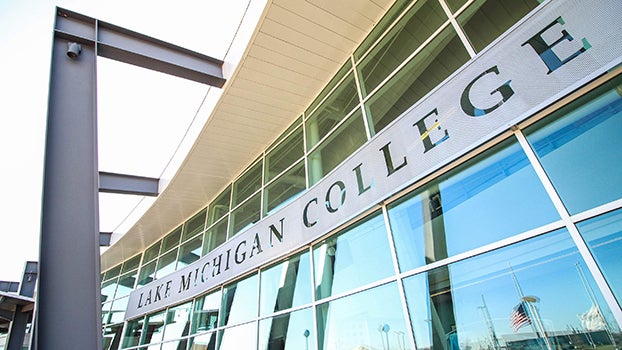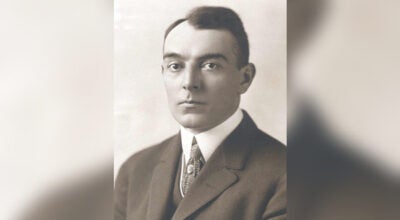SMC hosting art faculty exhibit through Dec. 7
Published 8:00 am Thursday, November 30, 2017
Southwestern Michigan College’s annual faculty exhibition will be on view in the Room 108 art gallery of the Dale A. Lyons Building on the Dowagiac campus through Thursday, Dec. 7.
The exhibit features works by retired Professor Emeritus David Baker, Lea Bult, Marc Dombrosky, Shannon Eakins, Dennis Hafer, Jan Kimball, Bill Rothwell and the late Terry Pfliger.
Gallery hours are 10 a.m. to 3 p.m. Monday through Thursday.
Bult, who is teaching painting this semester and drawing next semester, tackled human trafficking in “Hidden Cargo,” from the Out of Sight series.
She worked with the Human Trafficking Clinic at the University of Michigan.
Each painting depicts a trafficking case.
Using the clinic’s database as a research guide, she visually reconstructed recent U.S. slavery cases.
“I was particularly interested in the locations of the cases due to the fact that they often occur in everyday settings, such as strip malls or truck stops,” Bult said. “I wanted to highlight the pervasiveness of modern slavery in America. It is more common than we realize — an invisible presence in the familiar and mundane.”
When Out of Sight concluded, Bult moved to west Michigan and bought a house close to Lake Michigan.
“I found walking on the beach to be quite therapeutic — especially after all of the harrowing stories I encountered at the clinic,” she said. “The ‘Panoptic’ series is a study in mindfulness and the practice of being in the moment as a means to counter emotional distress.”
“Siobhan in Male” and “Laura in Male” are from Bult’s current paintings series, Portrait of a Man.
“For this project I am turning female subjects into a male version of themselves,” she said. “Each participant responds to the question, ‘If I was a man…’ with the idea being to think about how one’s life and personality would be different as the opposite gender. The series highlights the difference between male and female lived experience and the disconnect between the two.”
Finally, Bult’s “Happy Front” is graphite on paper of a person wearing a bear suit, although the human element is mostly obscured.
“I chose a bear because it is a wild animal people tend to humanize — especially for the purpose of amusement,” she said. “Therefore, I think our understanding of bears might be somewhat skewed due to our cultural associations with them. I had no plan going into it, I just wanted to make a big, silly drawing. As an artist, I think it’s important to allow yourself the freedom to experiment without overthinking your work.
“As the piece started to emerge it became about the outward appearance we show to the world and how that may be very different from the person inside.”
Bult lectures on her work at the Box Factory in St. Joseph at 7 p.m. Dec. 7.
Rothwell’s digital photography depicts boats docked in the Avalon harbor on Santa Catalina Island, about 20 miles off the coast of the southern California mainland, and fences early last spring at St. Joseph’s Silver Beach.
Rothwell edits and scales images in camera raw and Photoshop, then uploads them to Photobucket Print Shop for mounting canvas prints.
“As my photos tend to emphasize patterns and textures,” Rothwell said, “I like the painting-like representation that is afforded by large canvas prints.”
Hafer mounted his digital prints on aluminum.
Kimball’s ceramics include porcelain scribble pots and an earthenware fall vase.
Baker showed “Jenny’s Trade,” a watercolor on paper, and three tree oil panels, “Reptile,” “Tumors” and “Embrace.”
Dombrosky’s “some cosmic rationale” combines a found soccer cleat, a blown glass vessel, a painted wooden panel, a shed snake skin, an imitation pearl, dried lavender, a folded paper sculpture, a robin’s nest, a gold twist tie ring and embroidery on found paper notes.
The rear gallery features Shannon Eakins’ “Low Fire Tomorrow,” ceramics with graphite powder rub, and “The Storm,” an assemblage of branches perhaps deposited by a series of hurricanes and an NFL player taking a knee.
“The Storm does not have a singular message, per se,” she said. “Rather, it’s meant to function more as a collage of current issues; multiple stressors intersecting and overlapping, each element perhaps diminishing, amplifying or combining into a new collective experience. It’s an awkward, layered assembly of objects that sits quietly in the darkness until it is activated by our movements. Sitting still to observe it alone from the black couch in the room turns it off; engaging with it, however briefly, or even just trying to leave it alone starts the entire process again.”
Southwestern Michigan College is a public, residential and commuter, community college, founded in 1964. The college averages in the top 10 percent nationally for student academic success based upon the National Community College Benchmark Project. Southwestern Michigan College strives to be the college of first choice, to provide the programs and services to meet the needs of students, and to serve our community. The college is accredited by The Higher Learning Commission of the North Central Association of Colleges and Schools and is a member of the American Association of Community Colleges.





